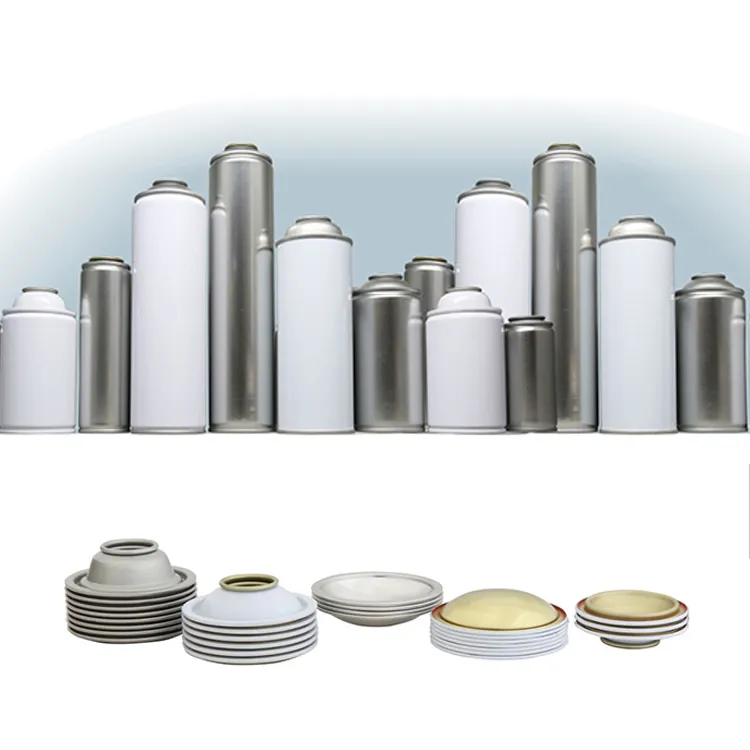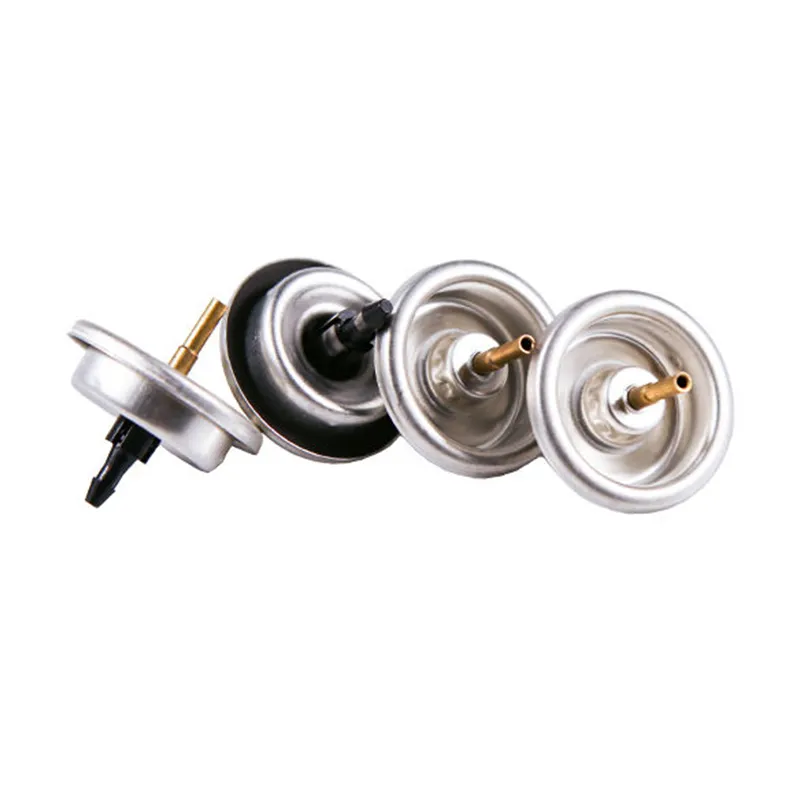Aerosol cans, as specialized metal packaging containers, are widely used for the storage and dispensing of cosmetics, food, daily necessities, pharmaceuticals, and industrial products. Among the many types of aerosol cans, three-piece aerosol cans are widely used due to their large capacity, high strength, and excellent sealing properties. However, the public often encounters a concerning question when using them: Why do three-piece aerosol cans explode when heated?
This article will provide an in-depth analysis of the three-piece aerosol can's structure, the properties of its internal fillings, physical and chemical principles, and environmental influences, revealing the causes of explosions. Through a logically organized, layered explanation, it will help the public understand this seemingly dangerous but scientifically sound phenomenon.

What is a three-piece aerosol can? - Structural Features
1. What is the basic structure of a three-piece aerosol can?
A three-piece aerosol can consists of three main parts:
• Can body: Typically stamped from tinplate (tin-plated steel) or aluminum, it provides support and storage.
• Can base and can top: Attached to the top and bottom of the can, respectively, and typically securely connected to the can body via crimping technology.
• Valve system: Attached to the top of the can, it controls the release of the contents.
This three-piece structure is more robust than two-piece aerosol cans and can withstand higher internal pressures, making it suitable for products with high volatility or high spray requirements.
2. Why are three-piece aerosol cans designed as airtight containers?
The function of a three-piece aerosol can depends on its sealing properties. The container typically contains a liquid or gaseous propellant, along with the packaged substance. To ensure the spray function, a sealed space is necessary to maintain a stable propellant pressure. However, this very airtightness also creates potential hazards when external conditions fluctuate.

What is filled inside a three-piece aerosol can?
1. What is a propellant? What are its characteristics?
The core filling inside a three-piece aerosol can is the propellant. Common propellants include liquefied petroleum gas (such as butane and propane), carbon dioxide, and nitrogen.
• Liquefied petroleum gas: It is a gas at room temperature and pressure, but converts to a liquid under certain pressure and is highly volatile.
• Carbon dioxide: It is an inert gas that can maintain pressure within the can under certain conditions.
• Nitrogen: It also acts as an inert gas, preventing chemical reactions with the contents.
These propellants share common characteristics: they are highly volatile, significantly affected by temperature, and their pressure increases with increasing temperature. This is also the key to the potential explosion risk of aerosol cans.
2. What else does aerosol can contain besides propellant?
In addition to propellant, three-piece aerosol cans also contain various actual products, such as spray paint, hairspray, detergent, and insecticide. These contents often contain volatile organic compounds or flammable solvents. When these coexist with the propellant in a sealed container, excessively high temperatures can exacerbate the pressure buildup within the can.
Why does heating cause aerosol cans to explode?
1. How does heating affect the pressure inside the can?
When a three-piece aerosol can is heated, the temperature of the propellant and contents inside the can increases. According to the ideal gas equation (PV = nRT), with constant volume, an increase in temperature inevitably leads to an increase in pressure.
• At room temperature, the pressure inside an aerosol can typically range from 2 to 8 atmospheres.
• Once the temperature rises above 40°C, the internal pressure increases significantly, exceeding the design pressure limit of the can material and causing a rupture.
This explains why aerosol cans are prone to explosions if left in cars or exposed to sunlight during hot summer months.
2. What is the physical process of explosion?
Aerosol can explosions typically occur through the following process:
• Temperature rises → Propellant vaporizes faster → Internal pressure rises sharply;
• Material compression → Insufficient can wall thickness or welds experience extreme pressure first;
• Structural rupture → The metal can wall is instantly torn apart;
• Contents come into contact with the outside world → If the contents or propellant are flammable, they will rapidly diffuse and combust in the air, causing a fireball or deflagration.
Therefore, heating not only causes physical rupture of the can but also poses a fire risk.

Can the pressure resistance of three-piece aerosol cans prevent explosions?
1. How strong is the can material?
Three-piece aerosol cans are typically made of cold-rolled steel or aluminum, which is strong enough to withstand the pressures of normal use. However, no matter how strong the material, it has a maximum pressure rating.
• During design, the can is built with a safety factor, meaning the pressure rating is usually higher than the normal operating pressure.
• However, if the external temperature is too high and the internal pressure exceeds the safety factor, the can will fail.
2. Are the seals and welds weak links?
Three-piece aerosol cans are made of three joined parts, and the seals and welds are often the most vulnerable points. Under high pressure, these joints may break first, becoming the trigger point for an explosion.
Is the thermal explosion related to the chemical properties of the contents?
1. What role do flammable substances play?
Many three-piece aerosol cans contain flammable chemicals, such as paint solvents and the alcohol component of air fresheners. When heated, these substances not only increase the internal vapor pressure but can also immediately come into contact with oxygen in the air after the can ruptures, causing combustion or explosion.
2. Does the propellant increase the explosion risk?
Propellants are often flammable gases, such as butane and propane. These substances are liquefied under high pressure in a sealed container. Once the temperature rises, they vaporize, further increasing the pressure. When the can ruptures, these gases rapidly diffuse, forming an explosive mixture with the air, triggering an even more violent explosion.
What are the impacts of the external environment on explosion risk?
1. Is high temperature the biggest trigger for explosions?
Undoubtedly, high temperature is the primary cause of aerosol can explosions. Whether it's exposure to the summer sun or proximity to a fire source, the temperature inside the can rises rapidly, causing the pressure to exceed the limit.
2. Can mechanical shock cause explosions after heating?
When heated, the interior of the can is already under high pressure. If it is then subjected to external impact or compression, it is very likely to rupture at a weak point, triggering an explosion.
3. Do ultraviolet light and humidity also have an impact?
Prolonged exposure to sunlight gradually weakens the can's surface coating, increasing the risk of corrosion. Once localized metal rust occurs, the can's pressure-bearing capacity decreases, making it more susceptible to explosion at high temperatures.

Summary: "Why do three-piece aerosol cans explode after heating?"
--The main reason three-piece aerosol cans explode after heating is that the pressure inside the can increases rapidly, exceeding the can's pressure limit. The explosion mechanism involves multiple steps: the evaporation of the propellant at high temperatures, the increased volatility of the flammable contents, the vulnerability of the can material and welds, and the triggering conditions provided by the external environment.
This type of explosion is not accidental; it is an inevitable result of the laws of physics and chemistry. When using three-piece aerosol cans, only by fully understanding their internal structure and characteristics can the public take appropriate precautions in their daily lives to avoid the risks associated with heating.
Does Dekai supply tinplate sheets and printing services?
Yes, Dekai offers tinplate sheets, coatings, and metal printing services with factory-direct sales. Our four-color UV printing line delivers high-quality customized graphics at competitive prices. Buyers can purchase tinplate packaging materials for cans, lids, or other applications. As a professional supplier in China, we provide wholesale solutions, affordable prices, and discount promotions for bulk orders. Contact us!

